Crossing and finishing are among the most decisive aspects of football, often separating average teams from elite ones. Whether you’re delivering a pinpoint ball into the box or timing a run to score, success in these moments depends on technique, timing, and decision-making.
In this article, we’ll explore the core principles behind effective crossing and finishing, followed by practical drills designed to replicate match situations and help players perfect their delivery and movement.
Why Focus on Crossing and Finishing?
While many goals are scored through intricate build-up or individual brilliance, a large percentage still come from wide areas—especially in transitions or against low-blocks. However, crossing is not just about whipping the ball in. It’s about:
- Recognizing space and timing.
- Delivering with purpose—driven, lofted, cutback, etc.
- Synchronizing with attacking runs.
- Reading defensive positioning.
Finishing, in turn, involves more than just striking technique. It’s about anticipation, body orientation, and reacting under pressure.
Top Crossing and Finishing Drills
Here are five detailed, game-relevant drills that simulate match-like crossing and finishing situations. These drills are suitable for team sessions or small-group technical development.
1. 4v3 Wide Overload to Finish
Setup:
Organize four attackers—one winger, one attacking fullback, and two central forwards—against two defenders in the box and one in the wide area. A coach or midfielder serves the ball out wide to start the drill.
Objective:
Create numerical superiority in wide areas, force decision-making under pressure, and train multiple finishing options based on cross type and movement.
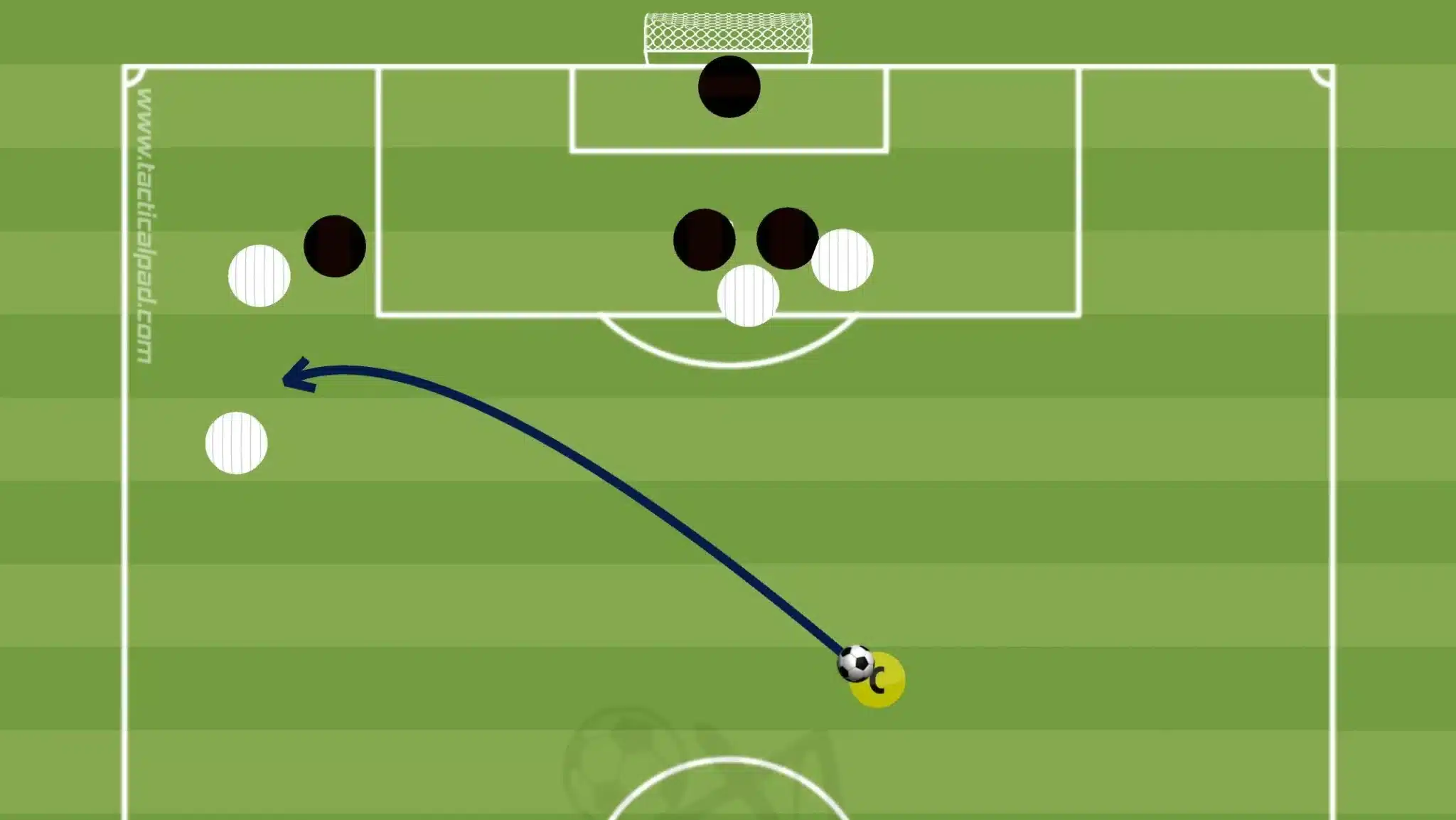
Drill Progression:
- Start with unopposed runs to practice patterns.
- Add defenders to increase pressure.
- Encourage different types of deliveries depending on defender positions (e.g., early cross, cut-back, back-post chip).
Coaching Points:
- The wide players should scan before crossing and consider defensive pressure.
- Central attackers must make complementary runs—one front post, one peeling off to the far post.
- Finishing should be aggressive but composed; encourage one-touch finishes when possible.
2. Repetition Crossing Drill with Finishing Zones
Setup:
Use mannequins or passive defenders to mark zones (near post, penalty spot, far post). Wingers or fullbacks deliver a series of crosses from both flanks while finishers make runs into the box and try to score.
Objective:
Repetition builds muscle memory and consistency in both delivery and finishing. Each attacker gets multiple repetitions from different angles and zones.
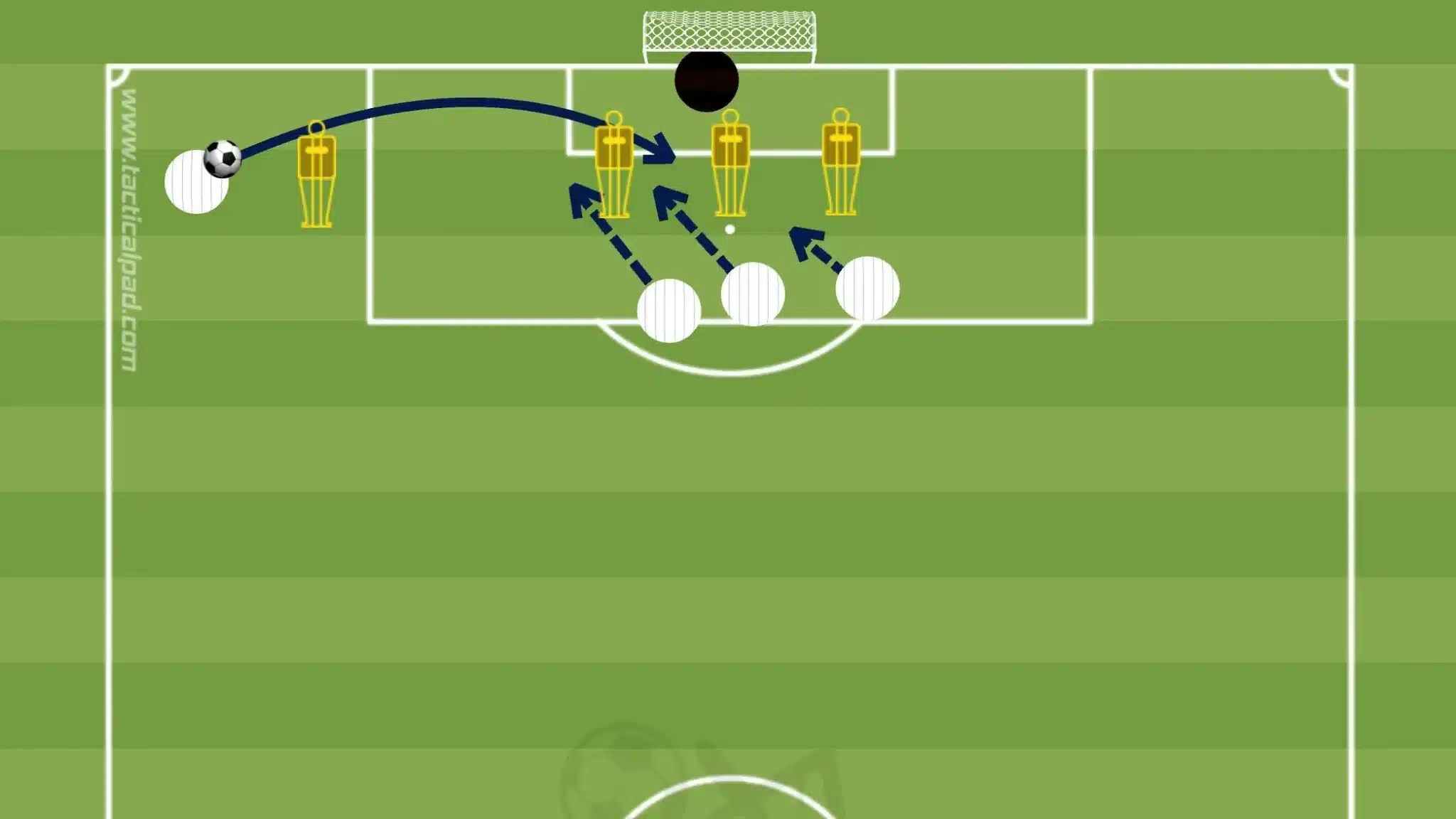
Drill Progression:
- Begin with static deliveries.
- Introduce movement timing and finishing under time constraints.
- Add live defenders or a goalkeeper to increase challenge.
Coaching Points:
- Crossers should vary their delivery style—driven, lofted, clipped.
- Attackers should focus on clean technique, positioning between defenders, and hitting target areas consistently.
- Reinforce scanning, communication, and body orientation before striking.
3. Cut-back Chaos Drill
Setup:
A winger or overlapping fullback receives a ball in a wide channel and drives toward the byline. Central midfielders or attackers time delayed runs into the box, aiming to meet a cut-back ball. Include a live defender and goalkeeper for realism.
Objective:
Simulate one of the most effective crossing situations in football: low cut-backs after penetration behind the defense.
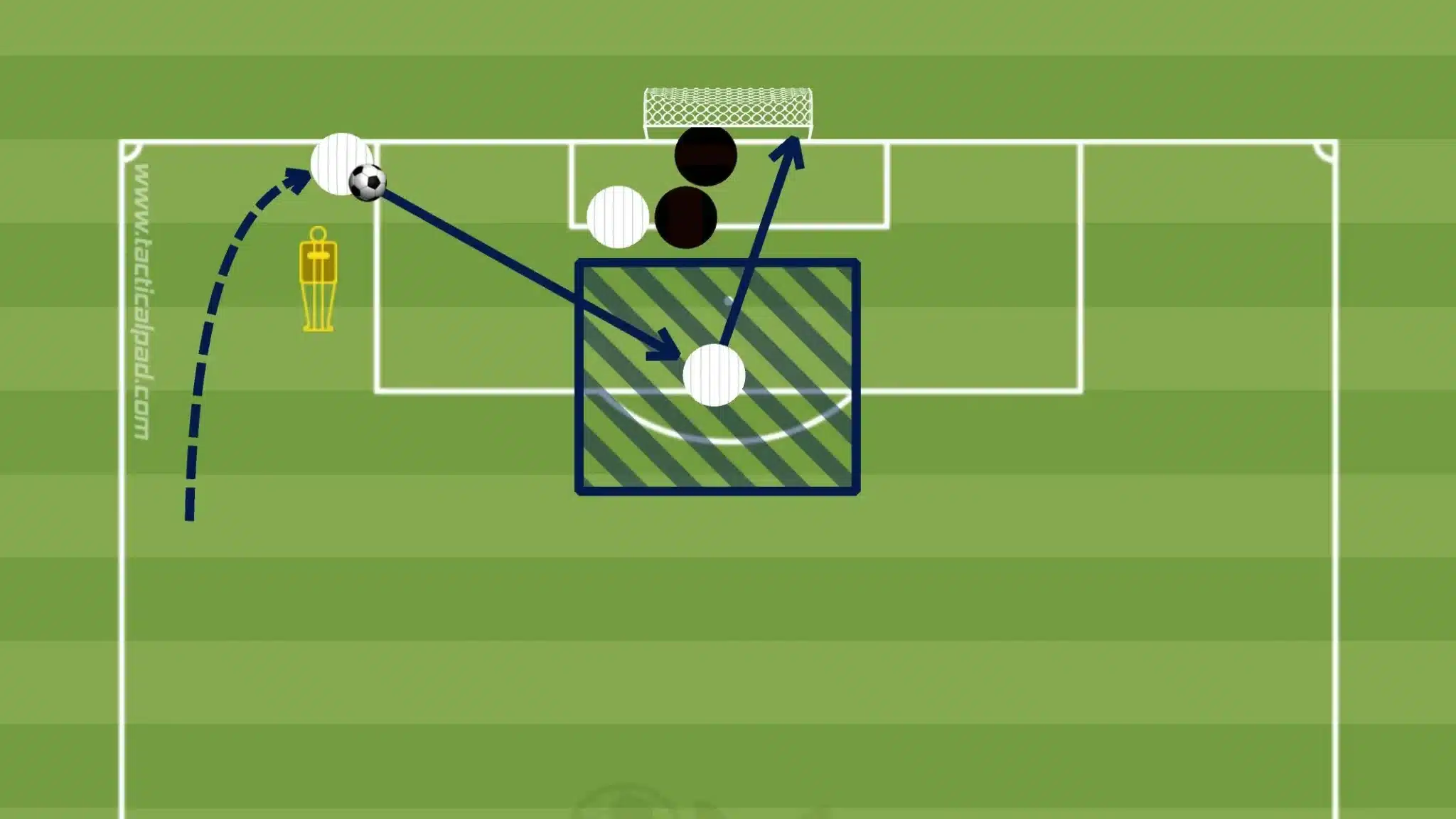
Drill Progression:
- Start with 1v0 or 2v1 scenarios.
- Add more defenders to recreate tight, high-pressure spaces.
- Encourage dynamic supporting runs from deeper midfielders.
Coaching Points:
- The wide player must recognize when to drive deep and when to cut the ball back.
- Attackers must avoid arriving too early—focus on timing and staying at the edge of the box until the moment to strike.
- Encourage clean, low deliveries to avoid defenders’ legs and target the second line of attack.
4. Opposed Transition Cross and Finish
Setup:
Set up a small-sided game (e.g., 6v6) with wide target zones marked by cones or neutral players on the touchlines. When a team regains possession, their objective is to switch play wide and deliver a cross into the box.
Objective:
Recreate high-tempo transition moments, forcing players to recognize attacking opportunities and quickly exploit space on the flanks.
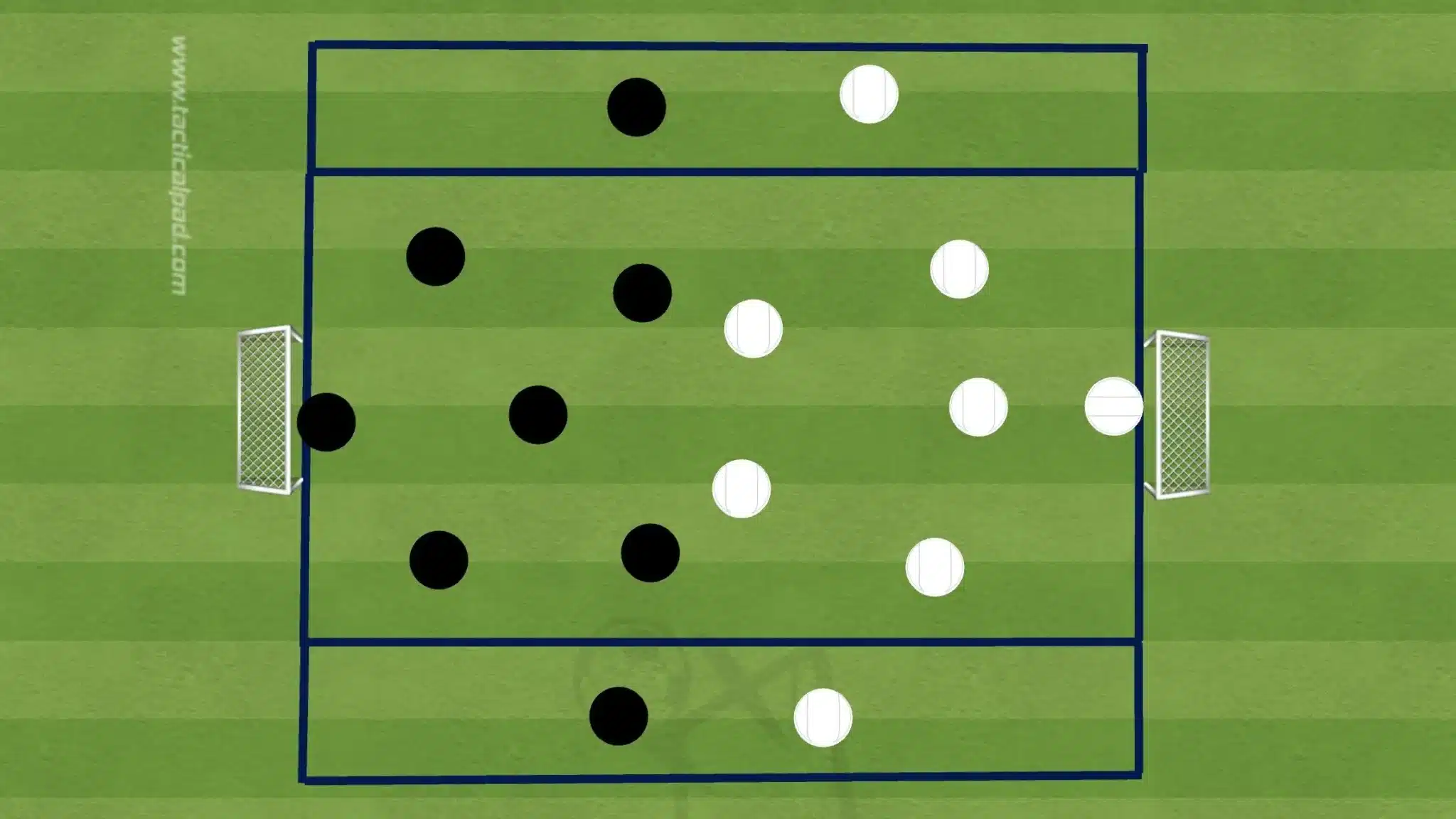
Drill Progression:
- Begin with neutral wide players delivering crosses unopposed.
- Move to fully opposed transition scenarios with defenders recovering.
- Use a scoring system to reward goals from crosses and well-timed finishes.
Coaching Points:
- Emphasize the speed of transition—how quickly the ball is moved wide after recovery.
- Crossers should read the box and deliver based on the number of runners.
- Attackers must communicate, show intent in their runs, and adapt to where the delivery is going.
5. One-Touch Finishing Relay
Setup:
Place two crossing stations on each wing. One or two attackers rotate between them, receiving rapid-fire crosses from alternating flanks. Finishers must strike the ball first-time and immediately move to the next station.
Objective:
Develop quick reactions, composure, and sharp finishing under physical and mental fatigue.
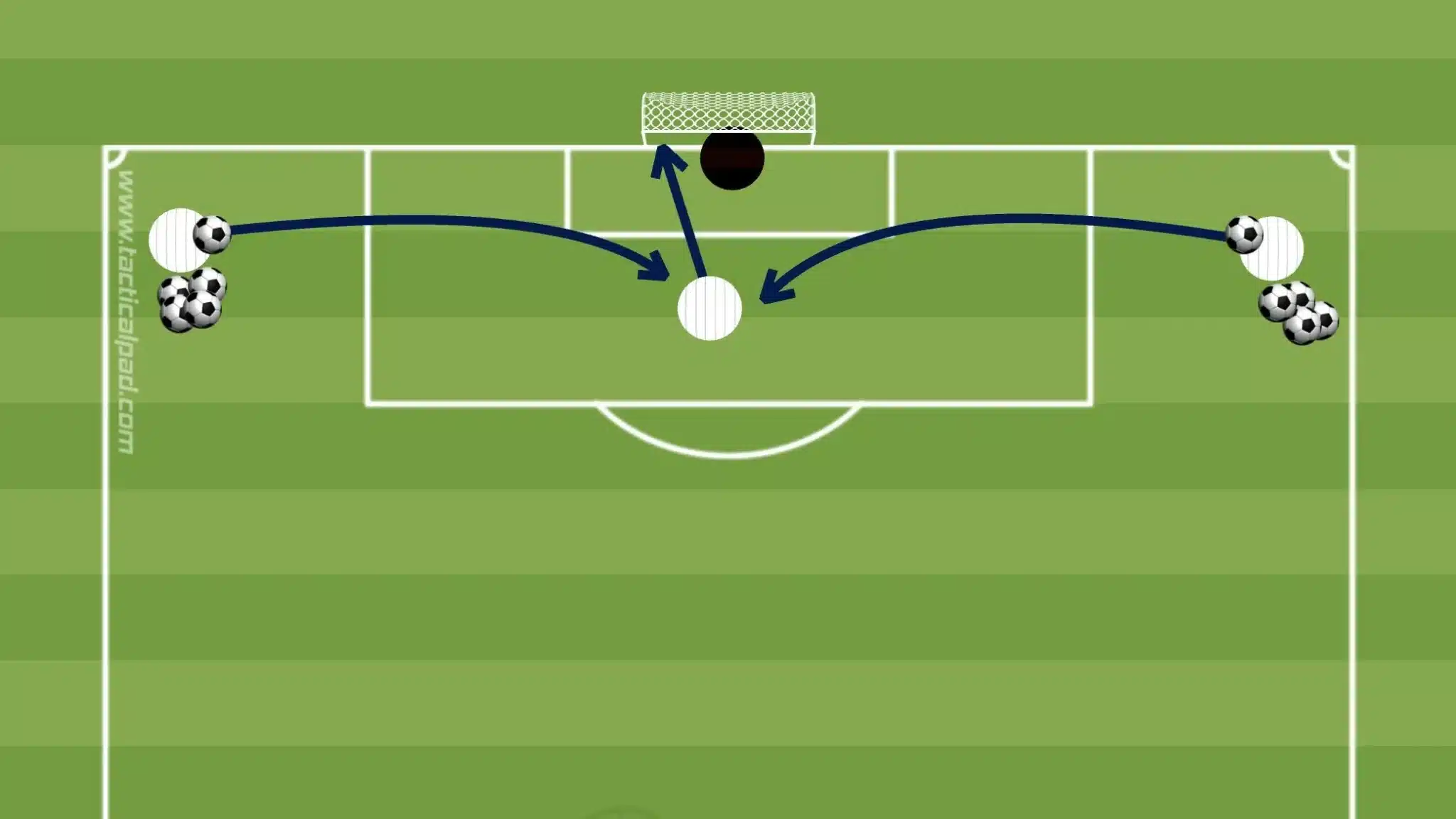
Drill Progression:
- Start with no pressure, one-touch finishes.
- Add a passive or live defender to apply pressure.
- Introduce a time limit to increase intensity.
Coaching Points:
- Focus on body shape, balance, and clean first-time contact.
- Encourage a variety of finishes—volleys, headers, side-foots.
- Teach players to stay mentally focused and composed, especially as fatigue builds.
Final Thoughts: Drills Must Match Game Demands
Crossing and finishing are more than technical skills—they’re tactical tools that must match your playing style. Whether you play with overlapping fullbacks or inverted wingers, or rely on quick cut-backs versus aerial threats, your drills should reflect real match scenarios.
By consistently applying these crossing and finishing drills with purpose and detail, players can dramatically improve their attacking output. For wingers, fullbacks, and strikers alike, mastering delivery and execution can turn chances into goals—and games into wins.
